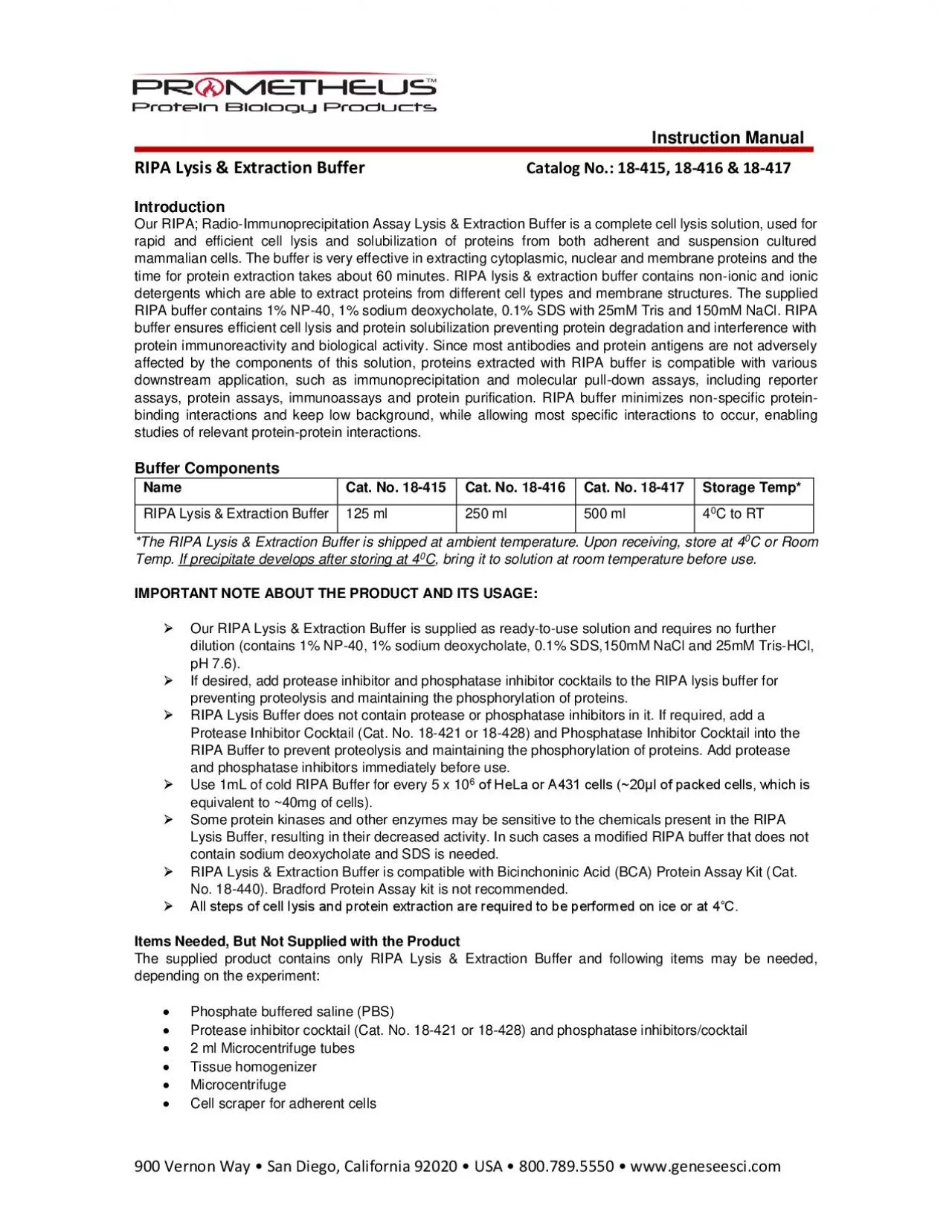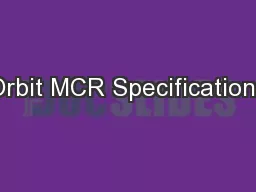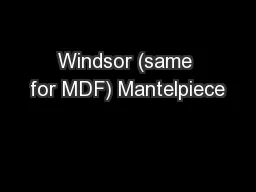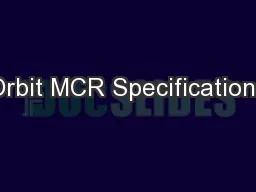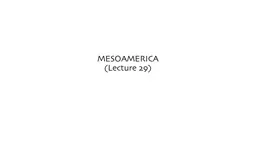PDF-900 Vernon Way
Author : okelly | Published Date : 2021-09-01
San Diego California 92020USA 8007895550 wwwgeneseescicomInstruction ManualRIPA Lysis Extraction BufferCatalog No 18415 18416 18417IntroductionOur RIPA RadioImmunoprecipitation
Presentation Embed Code
Download Presentation
Download Presentation The PPT/PDF document "900 Vernon Way" is the property of its rightful owner. Permission is granted to download and print the materials on this website for personal, non-commercial use only, and to display it on your personal computer provided you do not modify the materials and that you retain all copyright notices contained in the materials. By downloading content from our website, you accept the terms of this agreement.
900 Vernon Way: Transcript
Download Rules Of Document
"900 Vernon Way"The content belongs to its owner. You may download and print it for personal use, without modification, and keep all copyright notices. By downloading, you agree to these terms.
Related Documents

